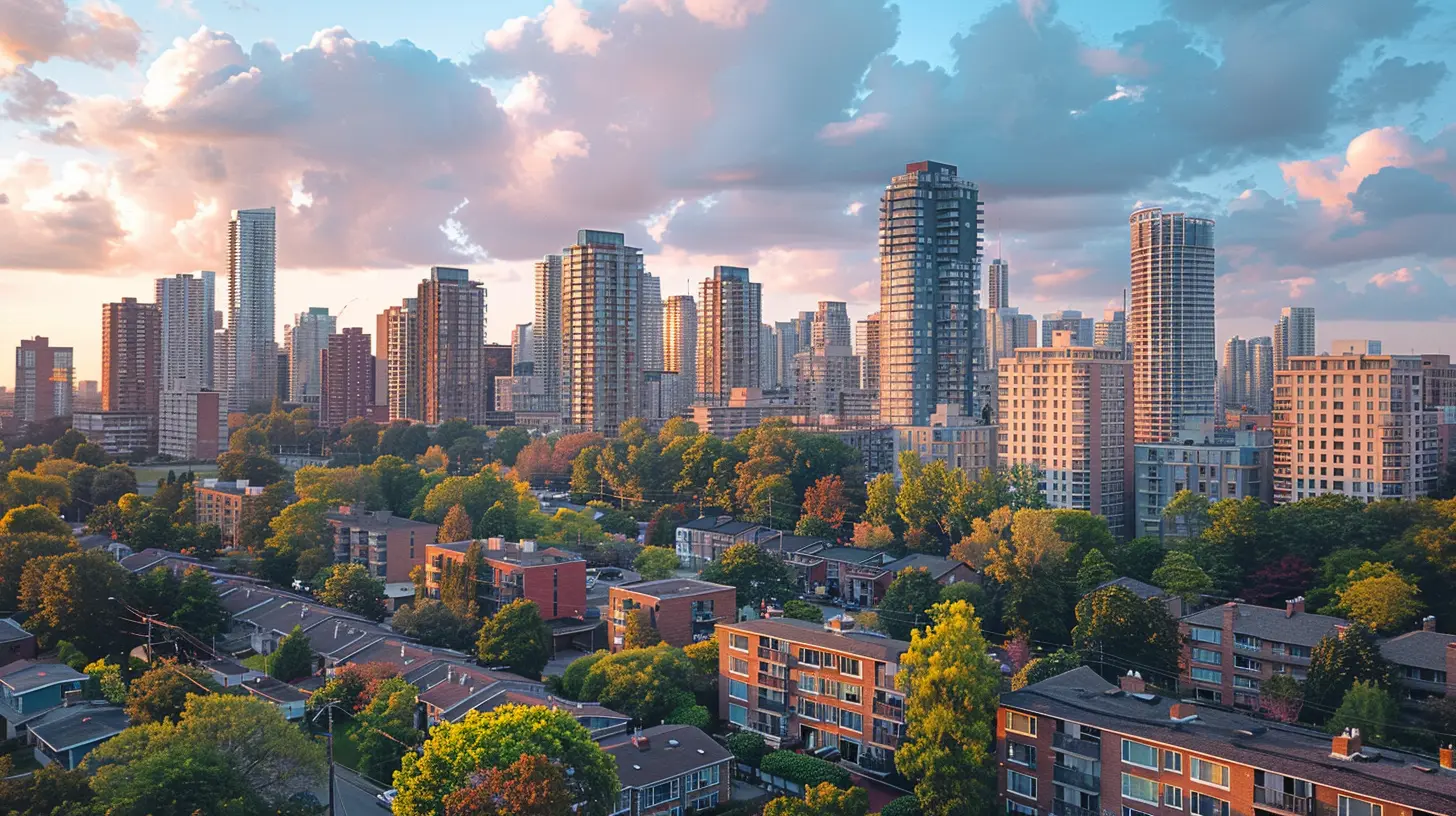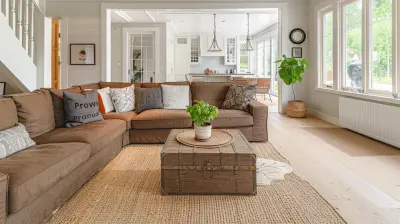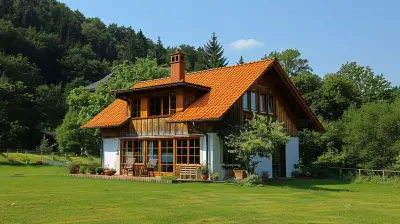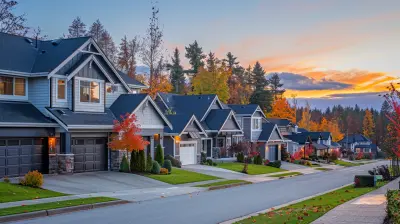13 December 2024
If you’ve ever wandered through a vibrant neighborhood where residential apartments sit atop buzzing retail shops and trendy cafes, you were likely strolling through a mixed-use development. These spaces are the urban planning equivalent of peanut butter and jelly—a little unconventional but a perfect match. However, behind the scenes, zoning regulations play a crucial role in shaping how these dynamic areas come to life.
But let’s face it—zoning laws can be as dry as reading a thousand-page user manual for a toaster. Yet, they have a huge impact on how our cities function, how we live, and even how we commute. So, what’s next for zoning regulations in mixed-use developments? Let’s dive into the future of these urban game-changers. 
What Are Zoning Regulations and Why Do They Matter?
Before we jump into the crystal ball, let’s start with the basics. Zoning regulations are essentially the rulebook for land use. Imagine your local government as a referee—zoning rules dictate what kind of structures can be built, how tall they can be, and whether they’re for living, shopping, or working. It’s how cities avoid turning into a chaotic free-for-all where a nightclub might randomly sit next to a school.But here’s where it gets tricky. Traditional zoning laws often segregate land use—residential areas here, commercial zones there, and industrial districts way over there. While this might sound organized, it’s not always practical in today’s urban landscape. People want more convenience and less commuting—that’s where mixed-use developments come in. 
The Rise of Mixed-Use Developments
Mixed-use developments are all about blending together different types of spaces—residential, commercial, and sometimes even industrial—all in one area. Think of them as the Swiss Army knife of urban planning. They make life easier, encourage walkability, and often lead to more sustainable cities.But creating these spaces isn’t as simple as slapping a retail shop next to a row of apartments. This is where zoning regulations come into play. Traditional rules don’t always allow for this kind of mix-and-match approach. Cities are increasingly realizing they need to rewrite the rulebook to keep up with changing demands.
Why Are Mixed-Use Spaces So Popular?
Here’s a quick reality check: most of us don’t want to spend hours commuting back and forth. A mixed-use development means you can grab a coffee, hit the gym, and pick up groceries without needing to jump in a car—or even leave the building in some cases.For developers, these spaces are a goldmine—residents love the convenience, and businesses thrive on the foot traffic. It’s a win-win. And in a world that’s all about sustainability, mixed-use developments encourage people to ditch the car and embrace walking or public transport.
The Challenges of Traditional Zoning
Let’s get real for a moment: traditional zoning isn’t exactly keeping up with the times. These rules were largely designed for a different era—when cities were more spread out and car dependency was the norm.Outdated Rules and Red Tape
Many zoning codes still follow the outdated concept of "Euclidean zoning," which separates land use into rigid categories. For example, some areas might be strictly residential, while others are purely industrial. Mixed-use developments? They fall into a gray area, often requiring lengthy variance approvals.This can be a nightmare for developers, who are forced to navigate confusing layers of red tape. It’s like trying to assemble IKEA furniture without the instruction manual—frustrating and unnecessarily complicated.
NIMBYism (Not in My Backyard)
Another challenge? Community pushback. People love the idea of convenience—until it shows up in their backyard, bringing construction noise and potential changes to property values. While mixed-use developments benefit the larger community, they can still face stiff resistance from local residents.
The Future of Zoning Regulations
Here’s the good news: zoning regulations are evolving. Cities are starting to recognize the need for flexible, forward-thinking policies that embrace the mixed-use concept. Let’s break down where things are headed.1. Form-Based Codes
One of the biggest trends is the shift toward form-based codes. Unlike traditional zoning, which focuses on land use, form-based codes emphasize the physical design of a space. This means more focus on how buildings interact with the street, their size and shape, and how they contribute to the overall character of an area.For example, instead of saying, "This lot must be residential," the code might say, "This building should have active storefronts on the ground floor and residential units above." It’s a more flexible, design-oriented approach that fits perfectly with mixed-use developments.
2. Incentivizing Mixed-Use Projects
Cities are also starting to offer incentives for developers to build mixed-use projects. These might include tax breaks, reduced permitting fees, or density bonuses (allowing developers to build more units than normally permitted). Essentially, cities are saying, "Hey, we want more of this, so we’ll sweeten the deal for you."3. Prioritizing Sustainability
The future of zoning is also tied to sustainability. As cities aim to reduce carbon footprints, mixed-use developments are leading the charge. Expect zoning laws to increasingly promote eco-friendly features like green roofs, renewable energy systems, and bike-friendly infrastructure.4. Technology and Smart Zoning
Technology is set to play a huge role in the evolution of zoning regulations. Data analytics, GIS mapping, and even AI can help cities make more informed zoning decisions. For instance, cities could analyze pedestrian traffic patterns to identify ideal locations for mixed-use projects.Smart zoning could also allow for dynamic changes. Imagine zoning that adapts to shifting trends—say, an area designated for retail can seamlessly transition to residential as the neighborhood evolves. It’s like zoning on steroids.
The Benefits of Evolving Zoning for Mixed-Use Developments
So, why does this matter? What’s in it for us? Here are a few of the key benefits we can expect as zoning regulations catch up with the times.1. More Vibrant Communities
Flexible zoning will pave the way for dynamic neighborhoods where people can live, work, and play—all without leaving the area. This doesn’t just make life easier; it fosters a sense of community.2. Reduced Commute Times
With everything closer together, zoning changes could drastically slash commute times. Imagine a world where spending hours in traffic becomes a thing of the past. Sounds amazing, right?3. Environmental Benefits
By cutting down on car dependency, mixed-use developments promote walkability and reduce greenhouse gas emissions. They also create opportunities for sustainable building practices.4. Economic Growth
Flexible zoning can breathe new life into underutilized areas, transforming them into thriving economic hubs. Businesses benefit from increased foot traffic, while residents enjoy greater convenience.What’s Next?
Here’s the bottom line: cities are at a crossroads. Traditional zoning rules served a purpose, but they’re no longer cutting it in today’s fast-paced, convenience-driven world. The future? It’s all about flexibility, creativity, and forward-thinking policies that embrace the mixed-use revolution.The good news is we’re already seeing progress. Cities around the globe are rethinking their zoning codes and breaking free from the one-size-fits-all approach. It’s an exciting time for urban development—and we’re just getting started.
So the next time you stroll through a neighborhood that seamlessly blends homes, shops, and workplaces, take a moment to appreciate the zoning innovations that made it possible. The rules may be changing, but one thing’s for sure: the future of mixed-use developments is looking brighter than ever.












Destiny Potter
Insightful perspective on zoning evolution!
March 29, 2025 at 12:10 PM